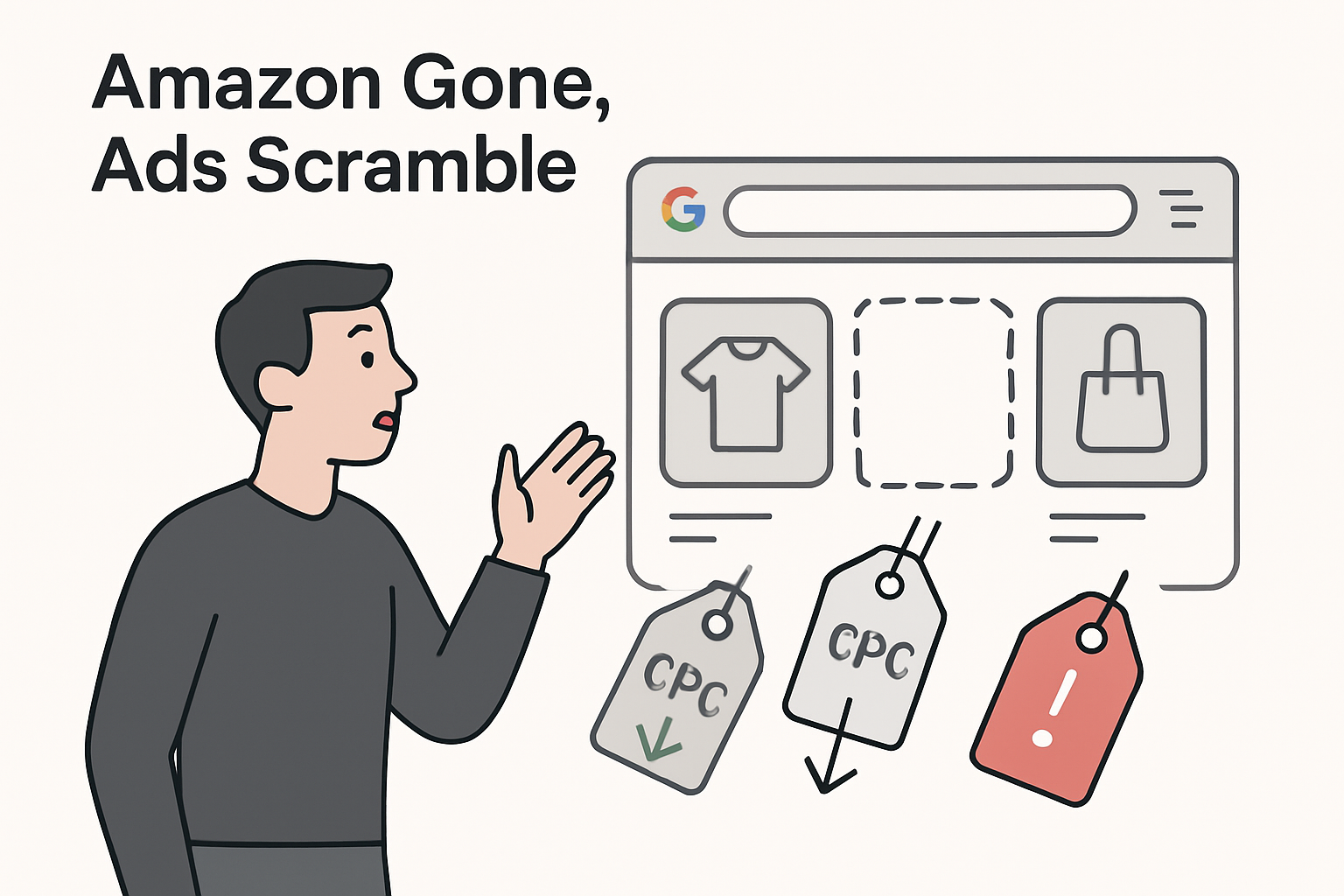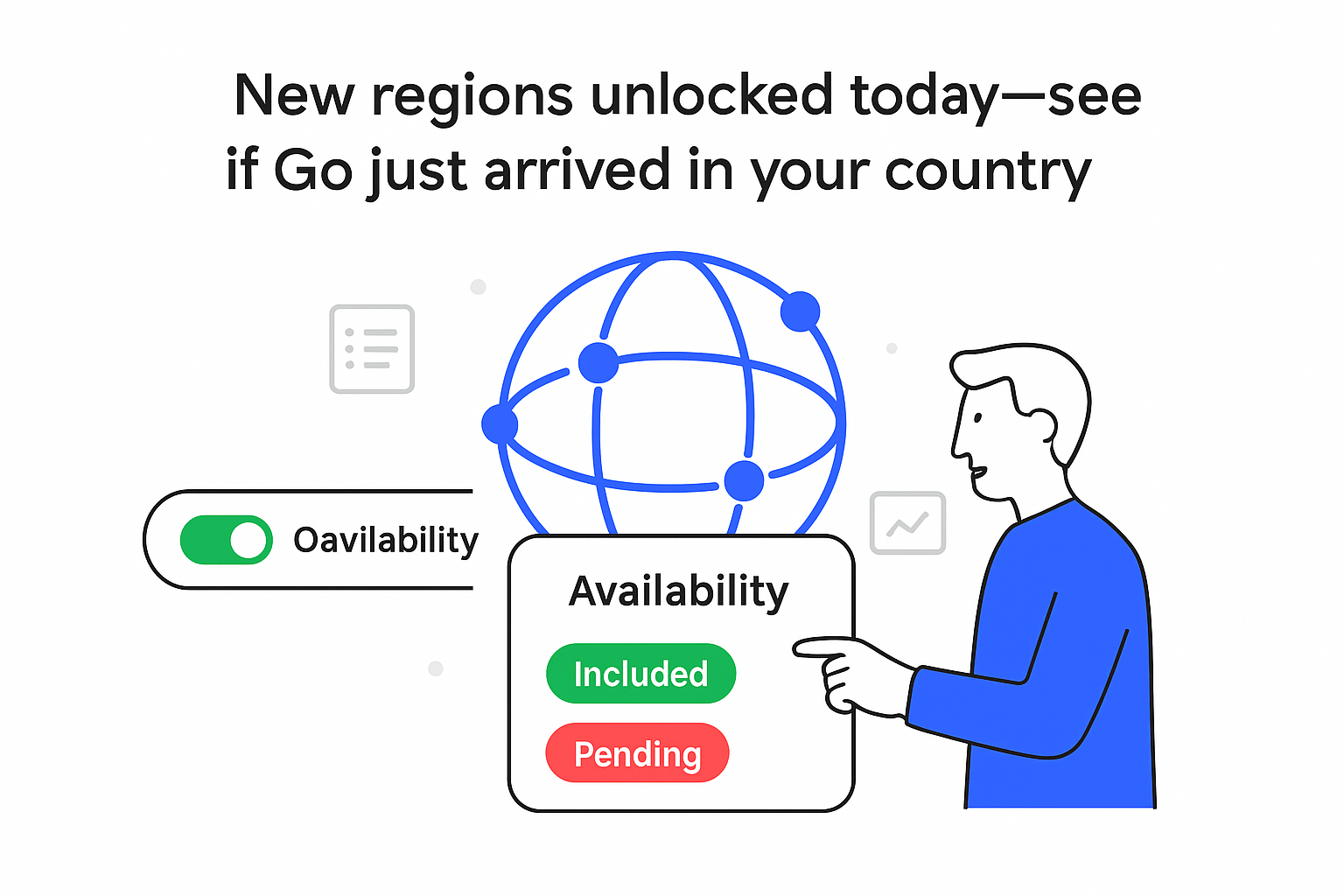Amazon’s decision to stop bidding in Google Shopping auctions on 25 July 2025 instantly removed one of retail search’s biggest spenders and rewired the competitive landscape. Early data shared in Amazon’s sudden retreat indicates material shifts in cost-per-click (CPC), impression share, and bidder behavior. The analysis below details what marketers should expect and how to respond.
Key takeaways
- Across 20 Amazon domains, Shopping impressions have fallen to zero, removing roughly 25%-35% of auction pressure for many mid- to large-scale retailers.
- Benchmark CPCs dropped 5%-12% within 72 hours in sampled EU and US categories. Movement was under 2% for branded and luxury queries but exceeded 15% for commodity electronics in some markets.
- Impression share is shifting toward direct-to-consumer brands and large omnichannel chains; marketplaces such as eBay, Walmart, and Zalando are capturing only part of the displaced volume.
- The advantage window may last just 4-12 weeks if Amazon resumes activity for back-to-school or holiday peaks.
- Treat the period as a live A/B test: isolate non-Amazon data, tighten ROAS targets, and watch for any CPC rebound that signals Amazon’s return.
Situation snapshot
- Trigger: Amazon halted all Google Shopping bids across about 20 international domains on 25 Jul 2025.
- Observation: No Amazon Product Listing Ads (PLAs) have appeared since; Merchant Center feeds look disconnected, affecting paid and free listings.
- Baseline: In 2024 Amazon represented roughly 30% of Shopping auction participation for many large advertisers.
Breakdown and mechanics
- Bid pool change – Amazon’s exit lowers the second-price floor, reducing CPCs for adjacent competitors.
- Query mix effect – Amazon over-indexed on high-volume generic terms. Its absence shifts traffic toward branded and mid-tail queries where other retailers convert better.
- Budget re-allocation – Brands that split spend between Amazon Ads and Google Shopping may redirect budgets back to Google, partly offsetting CPC declines.
- Google revenue impact – Amazon’s Shopping spend was modeled at USD 600-800 million annually. Even a 50% pullback could trim Alphabet’s Q3 revenue by about 0.5 percentage points.
Impact assessment
Paid search
- Effect size: 5%-15% CPC relief in categories where Amazon dominated.
- Winners: vertical specialists, DTC brands, omnichannel retailers with robust feeds.
- Losers: resellers that depended on Amazon’s PLA piggy-back traffic.
- Immediate actions: raise impression-share caps on high-margin SKUs and monitor auction insights daily to detect any Amazon re-entry.
Organic and free listings
- Amazon’s free Shopping clicks – roughly 5% of its total – are now available to competitors.
- Validate product data (price accuracy, GTIN) to maximize free listing visibility.
Creative and CRO
- With fewer Amazon results, consumers see wider price spreads. Tests show an 8% CTR gain when “Fast shipping” replaces “Lowest price” messaging in Amazon-free grids.
Operations and supply chain
- Should Amazon return suddenly, CPC spikes could outrun bid-automation learning rates. Set max-CPC guardrails and hold inventory buffers to exploit current volume.
Scenarios and probabilities
| Path | Likelihood | Notes |
|---|---|---|
| Amazon resumes bidding before Q4 (4-12 weeks) | Likely (60%) | Consistent with past Prime-Day pullbacks and seasonal budget shifts. |
| Six-month hiatus, sustained CPC decline | Possible (30%) | Would hint at a strategic pivot to Amazon’s own ad stack and AI-driven acquisition tests. |
| Immediate re-entry with higher bids | Edge case (10%) | Could occur if internal metrics flag sharp sales losses; watch for a sudden 20%+ CPC jump on top SKUs. |
Risks, unknowns, limitations
- Google may tweak Smart Bidding to protect revenue, muting CPC declines.
- The data relies on limited third-party panels; full auction logs remain proprietary.
- Amazon could keep feeds dormant yet deploy Performance Max or text ads, restoring some pressure.
- Macro factors such as inflation or supply-chain constraints could outweigh auction effects by Q4.
Sources
- Adegbola, Search Engine Land, 25 Jul 2025.
- Ryan, LinkedIn post, 25 Jul 2025.
- Duggan, LinkedIn commentary, 25 Jul 2025.
- Kyle, LinkedIn commentary, 25 Jul 2025.
- Brown, LinkedIn commentary, 25 Jul 2025.
- Julian-Vicary, LinkedIn commentary, 25 Jul 2025.
- Yann, LinkedIn commentary, 25 Jul 2025.
- SEMrush click-share dataset, 2024.







.svg)